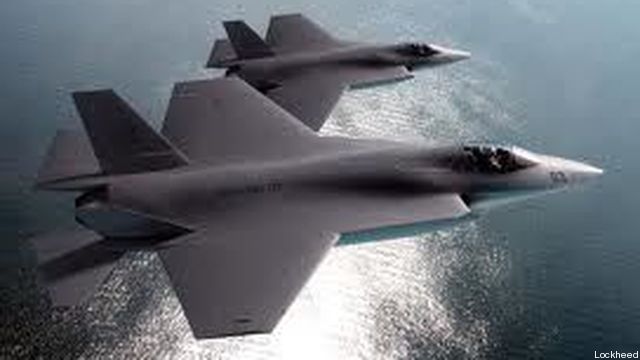
UPDATED: Adds NAVAIR Letter And JSF JPO, Lockheed Statements
AFA Winter, Orlando: What happens when all the top brass of the Air Force are attending a top conference on a Friday afternoon? Their biggest program, the Joint Strike Fighter, gets its entire fleet grounded because of a crack in a turbine blade. Details began trickling out just as most Air Force brass were headed to the airport after the Air Force Association’s annual conference here ended.
Of course, the F-35 isn’t just the Air Force’s biggest program. It’s the biggest conventional weapons program ever for any country.
Early word is that a low pressure turbine in the engine cracked. The engine is on its way to Pratt & Whitney for a complete check to figure out what happened, why and come up with a fix. We’ve sent emails and called the program office and Lockheed Martin for comment. As soon as it comes in, we’ll update this.
The crack poses “the threat of catastrophic failure,” according to a letter by Naval Air Systems Commander Vice Adm. David Dunaway sent to the Navy Secretary, Chief of Naval Operations, and the Marine Commandant. Dunaway says he will provide an update on the situation no later than March 1, next Friday.
This is not the first grounding of the fleet. The F-35Bs were briefly grounded last month when an improperly crimped hydraulic hose was found in the engine.
Here’s the F-35 Joint Program Office’s statement on the latest problem:
“On Feb 19, 2013, a routine engine inspection revealed a crack on a low pressure turbine blade of an F135 engine installed in a CTOL test aircraft at Edwards Air Force Base, Calif. Engineering teams are shipping the turbine blade to Pratt & Whitney s Engine Facility in Middletown, CT, to conduct more thorough evaluation and root cause analysis.”
They say it’s,”too early to know the fleet-wide impact of this finding, however as a precautionary measure, all F-35 flight operations have been suspended until the investigation is complete and the cause of the blade crack is fully understood. The F-35 Joint Program Office is working closely with Pratt & Whitney and Lockheed Martin at all F-35 locations to ensure the integrity of the engine, and to return the fleet safely to flight as soon as possible.”
Lockheed didn’t say much else, beyond averring that “safety is always our first consideration” and committing themselves to working hard to understand and fix the problem “so the F-35s can safely return to flight as soon as possible.”
This will cost money, of course. The question is, how bad is the problem and is it systemic or a unique problem in this engine. That sound you hear is the grinding of teeth in Lockheed’s headquarters suite.
Updated at 3:45 p.m. Friday and again at 4:05 p.m.
In a ‘world first,’ DARPA project demonstrates AI dogfighting in real jet
“The potential for machine learning in aviation, whether military or civil, is enormous,” said Air Force Col. James Valpiani. “And these fundamental questions of how do we do it, how do we do it safely, how do we train them, are the questions that we are trying to get after.”


























